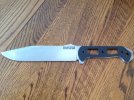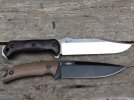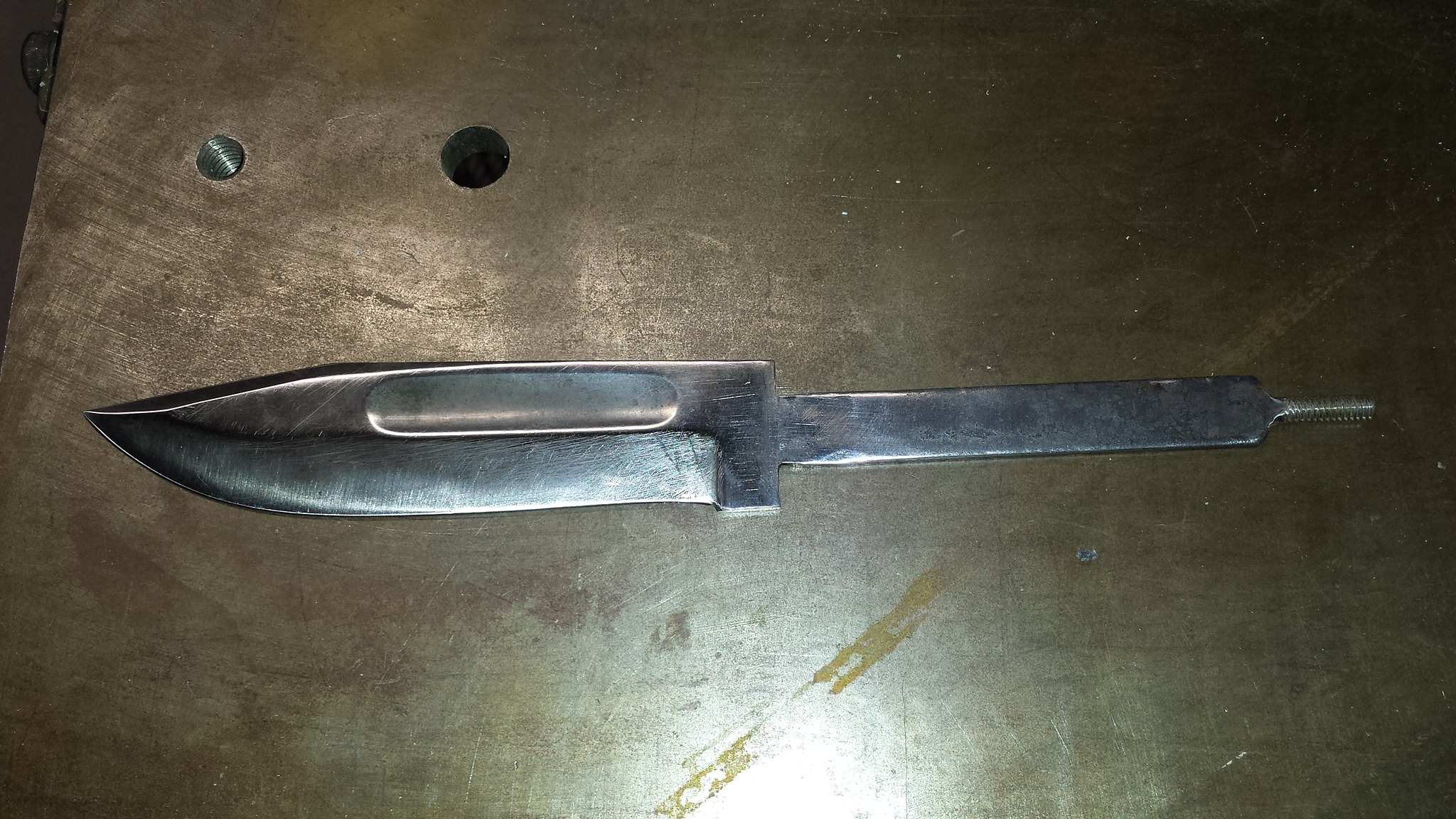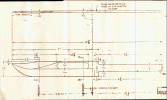Is it right to assume that the current WWII versions are rat tail? And the ones with the black rubber handle are full tang (I think they're called D2's or something?)? I'd like to buy a WWII version (leather handle etc. etc.) but not if I can only find it in rat tail.
-
The BladeForums.com 2024 Traditional Knife is ready to order! See this thread for details: https://www.bladeforums.com/threads/bladeforums-2024-traditional-knife.2003187/
Price is $300 ea (shipped within CONUS). If you live outside the US, I will contact you after your order for extra shipping charges.
Order here: https://www.bladeforums.com/help/2024-traditional/ - Order as many as you like, we have plenty.
You are using an out of date browser. It may not display this or other websites correctly.
You should upgrade or use an alternative browser.
You should upgrade or use an alternative browser.
Current production WWII Kabar Marine Corps Fighting knife full tang?
- Thread starter moabblade
- Start date
- Joined
- Feb 17, 2013
- Messages
- 6,166
Neither the WW2 1219C2/USN MK2 nor the VN versions nor the post-VN nor the currently made versions (Ontario for the government or Kabar in general) were ever "rat tail tang" knives.
A rat tail tang is round and sometimes tapers down at the pommel. The pommels are held on by either threading the tip of the tang and screwing a nut on to hold the pommel OR the tip of the tang is peened down to hold the pommel tight.
All of the "Kabar" knives had what some people call "stick tang" and what others call a full tang - the tangs are narrower than the blade, usually the same thickness as the blade and the pummels are held on by peening, pinning or the tang tip is threaded and the pommel tapped for screwing on and then being held in place by a split nut (first Camillus version) or peening (second Camillus version/all other companies during WW2) prior to the change to being pinned.
Some purists get bent out shape over calling the Kabar tang a "full" tang because the tang is hidden inside the handle. Well, the Kabar style tang is a full LENGTH tang as opposed to a half tang or a 3/4 tang. It is NOT a full WIDTH tang, but neither is it a rat tail tang that they then try to claim the Kabar has. To visualize what a real rat tail tang looks like, look at a rat tail.
A rat tail tang is round and sometimes tapers down at the pommel. The pommels are held on by either threading the tip of the tang and screwing a nut on to hold the pommel OR the tip of the tang is peened down to hold the pommel tight.
All of the "Kabar" knives had what some people call "stick tang" and what others call a full tang - the tangs are narrower than the blade, usually the same thickness as the blade and the pummels are held on by peening, pinning or the tang tip is threaded and the pommel tapped for screwing on and then being held in place by a split nut (first Camillus version) or peening (second Camillus version/all other companies during WW2) prior to the change to being pinned.
Some purists get bent out shape over calling the Kabar tang a "full" tang because the tang is hidden inside the handle. Well, the Kabar style tang is a full LENGTH tang as opposed to a half tang or a 3/4 tang. It is NOT a full WIDTH tang, but neither is it a rat tail tang that they then try to claim the Kabar has. To visualize what a real rat tail tang looks like, look at a rat tail.
- Joined
- May 18, 2015
- Messages
- 5,217
- Joined
- May 18, 2015
- Messages
- 5,217
eveled
Gold Member
- Joined
- Mar 11, 2016
- Messages
- 7,955
Rat Tang to me would be like on a file. A partial pointed tang with a wooden handle just jammed on.
As stated above all Kabar knives are full hidden Tang knives. Sames as they've been since WW2.
Full means it goes all the way through the full length of the handle.
Full tang can be a hidden Tang or exposed tang.
Sounds to me like the OP wants a Becker.
As stated above all Kabar knives are full hidden Tang knives. Sames as they've been since WW2.
Full means it goes all the way through the full length of the handle.
Full tang can be a hidden Tang or exposed tang.
Sounds to me like the OP wants a Becker.
Last edited:
- Joined
- Sep 17, 2015
- Messages
- 4,863
The closest style of blade to the 1217 made by KaBar that I know of with full tangs and more than a stick would be the bk7 and the Jarosz Turok both very niceIs it right to assume that the current WWII versions are rat tail? And the ones with the black rubber handle are full tang (I think they're called D2's or something?)? I'd like to buy a WWII version (leather handle etc. etc.) but not if I can only find it in rat tail.

 View attachment 939340
View attachment 939340The Bk 7 has a full skeleton tang
The Jarosz KaBar line have a true solid tang
Last edited:
- Joined
- Mar 9, 2018
- Messages
- 3,978
This, this is why I’m not a fan of the thinned down hidden full tang. It creates weak points.
Now, if they ever created a model with similar specs and full Becker-like tang, with screw on scales, I’d be all over it!

yeah, it's advisable not to baton with knives...
Only advise is to be fully aware of where all the possible stress points lie.
As with the pictured case above (for the next generation model)
where its single drilled pin hole (which not only creates for a narrow tang)
Had increased the chance of structural failure at that juncture of applied stress.
A more common failure for the USMC F/U model (and numerous other brands too)
would be where the tang and guard area.
It's inevitable to fracture when tight fitting parts refuse to give way...
Know the limitations and things would be far less stressful ;-)
Only advise is to be fully aware of where all the possible stress points lie.
As with the pictured case above (for the next generation model)
where its single drilled pin hole (which not only creates for a narrow tang)
Had increased the chance of structural failure at that juncture of applied stress.
A more common failure for the USMC F/U model (and numerous other brands too)
would be where the tang and guard area.
It's inevitable to fracture when tight fitting parts refuse to give way...
Know the limitations and things would be far less stressful ;-)
Last edited:






